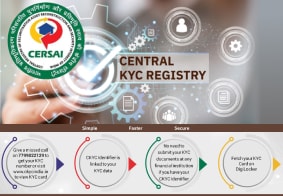CKYC Registry
-
Customer Service Contact us Service request Locate a branch
Find all the help you need
Scan the QR, get our app, and find help on your fingertips

Help CenterSupport topics, Contact us, FAQs and more
-
Login
Are you ready for an upgrade?
Login to the new experience with best features and services
-
Login
Are you ready for an upgrade?
Login to the new experience with best features and services
- Accounts
-
Deposits
IDFC FIRST Bank Deposits
View all Deposits -
Loans
IDFC FIRST Bank Loans
View all Loans - Wealth & Insure
-
Payments
IDFC FIRST Bank Payments
View all Payments -
Cards
IDFC FIRST Bank Cards
View all Cards - Blogs
- Corporate Account
-
Cash Management Services
IDFC FIRST Bank Cash Management Services
View all Cash Management Services - Supply Chain Finance
-
Corporate Lending
IDFC FIRST Bank Lending
View all -
Treasury
IDFC FIRST Bank Treasury
See more details - NBFC Financing
Support topics, Contact us, FAQs and more
- IDFC FIRST Bank Accounts
-
Savings Account
-
Corporate Salary
Account -
Senior Citizens
Savings Account -
First Power
Account -
Current Account
-
NRI Savings
Account -
TASC Institutional
Account -
Savings Account
Interest Calculator
- IDFC FIRST Bank Deposits
-
Fixed Deposit
-
Recurring Deposit
-
NRI Fixed Deposit
-
Safe Deposit Locker
-
FD Calculator
-
RD Calculator
- IDFC FIRST Bank Loans
-
Personal Loan
-
Consumer Durable
Loan -
Home Loan
-
Business Loan
-
Professional Loan
-
Education Loan
-
New Car Loan
-
Pre-owned Car Loan
-
Two Wheeler Loan
-
Pre-owned Two
Wheeler Loan -
Commercial Vehicle
Loan -
Gold Loan
-
Loan Against Property
-
Loan Against Securities
-
Easy Buy EMI card
-
Personal Loan
EMI Calculator -
Education Loan
EMI Calculator -
Home Loan
EMI Calculator -
EMI Calculator
-
Personal Loan Eligibility Calculator
- IDFC FIRST Bank Wealth & Insure
-
FIRST Select
-
FIRST Wealth
-
FIRST Private
-
Mutual Funds
-
Sovereign Gold Bond
-
Demat Account
-
Term Insurance
-
Life Insurance
-
Health Insurance
-
General Insurance
-
Bonds
-
Loan Against
Securities -
Portfolio Management
Service
- IDFC FIRST Bank Payments
-
FASTag
-
Credit Card
Bill Payments -
UPI
-
Funds Transfer
-
Forex Services
-
Pay Loan EMI
- IDFC FIRST Bank Cards
-
Ashva :
Metal Credit Card -
Mayura :
Metal Credit Card -
FIRST Millennia
Credit Card -
FIRST Classic
Credit Card -
FIRST Select
Credit Card -
FIRST Wealth
Credit Card -
FIRST WOW!
Credit Card -
Deals
-
Debit Cards
-
Co-branded Cards
-
Credit Card
EMI Calculator -
FIRST Corporate
Credit Card -
FIRST Purchase
Credit Card -
FIRST Business
Credit Card
- Premium Metal Credit Cards
-
AshvaLifestyle1% Forex₹2,999
-
MayuraLifestyleZero Forex₹5,999
-
FIRST PrivateInvite Only
- Best for travellers
-
MayuraZero ForexMetal₹5,999
-
Ashva1% ForexMetal₹2,999
-
FIRST WOW!Zero ForexTravelLifetime Free
-
FIRST SWYPTravel OffersEMI₹499
-
FIRST Select1.99% ForexLifestyleLifetime Free
-
FIRST Wealth1.5% ForexLifestyleLifetime Free
-
Club VistaraTravelLifestyle₹4,999
-
IndiGo IDFC FIRST Dual Credit CardTravelLifestyle₹4,999
- Max benefits, Free for life
-
FIRST Classic10X RewardsShoppingNever Expiring Rewards
-
FIRST Millennia10X RewardsShoppingNever Expiring Rewards
-
FIRST Select10X RewardsLifestyle1.99% Forex
-
FIRST Wealth10X RewardsLifestyle1.5% Forex
-
FIRST WOW!RewardsTravelZero Forex
-
LIC ClassicRewardsInsuranceShopping
-
LIC SelectRewardsInsuranceShopping
- Reward Multipliers
-
AshvaLifestyleMetal₹2,999
-
MayuraLifestyleZero Forex₹5,999
-
FIRST ClassicNever Expiring RewardsShoppingLifetime Free
-
FIRST MillenniaNever Expiring RewardsShoppingLifetime Free
-
FIRST SelectNever Expiring RewardsLifestyleLifetime Free
-
FIRST WealthNever Expiring RewardsLifestyleLifetime Free
- Rewards & Credit on UPI
-
FIRST Power+FuelUPI₹499
-
FIRST PowerFuelUPI₹199
-
FIRST EA₹NVirtual1% Cashback₹499
-
FIRST DigitalVirtualUPI₹199
-
IndiGo IDFC FIRST Dual Credit CardUPITravelDual cards
- Fuel and Savings
-
FIRST PowerRewardsUPI₹199
-
FIRST Power+RewardsUPI₹499
-
LIC ClassicRewardsInsuranceShopping
-
LIC SelectRewardsInsuranceShopping
- Express and Flaunt
-
AshvaMetal1% Forex₹2,999
-
MayuraMetalZero Forex₹5,999
-
FIRST SWYPEMIOfferMAX₹499
-
FIRST MillenniaRewardsShoppingLifetime Free
- FD Backed rewarding Credit Cards for all
-
FIRST EA₹NVirtualCashback₹499
-
FIRST WOW!Zero ForexTravelLifetime Free
-
CreditPro Balance TransferTransfer & SaveReduce InterestPay Smartly
- IDFC FIRST Bank NRI Forex Solutions
-
Send money to India-Wire transfer
-
Send money to India-Digitally
-
Send money abroad
-
Max Returns FD (INR)
- IDFC FIRST Bank MSME Accounts
-
Platinum Current
Account -
Gold
Current Account -
Silver Plus
Current Account -
Merchant Multiplier
Account -
Agri Multiplier
Account -
TASC Institutional
Account -
Dynamic Current
Account -
World business
Account -
First Startup
Current Account
- IDFC FIRST Bank Business Loans
-
Business Loan
-
Professional Loan
-
Loan Against Property
-
Business Loan for Women
-
Working Capital Loan
-
Construction Equipment Loan
-
Machinery Loan
-
Healthcare Equipment Loan
- IDFC FIRST Bank Business Solutions
-
Payment Solutions
-
Tax Payments
-
Doorstep Banking
-
Point of Sale (POS)
-
Escrow Accounts
-
NACH
-
Payment Gateway
-
UPI
-
Virtual Accounts
-
As per amendment in the Income Tax Rules, PAN or Aadhaar are to be mandatorily quoted for cash deposit or withdrawal aggregating to Rupees twenty lakhs or more in a FY. Please update your PAN or Aadhaar. Kindly reach out to the Bank’s contact center on 1800 10 888 or visit the nearest IDFC FIRST Bank branch for further queries.
-
-
Most Searched
Sorry!
We couldn’t find ‘’ in our website
Here is what you can do :
- Try checking the spelling and search
- Search from below suggestions instead
- Widen your search & try a more generic keyword
Suggested
Get a Credit Card
Enjoy Zero Charges on All Commonly Used Savings Account Services
Open Account Now
Fixed deposit vs Public Provident Fund: Which is better?
Summary: Choosing between a fixed deposit and a Public Provident Fund account requires a comparison of factors like interest rates, taxation benefits, investment tenure, liquidity, and suitability for financial goals.
Both Fixed Deposits (FDs) and Public Provident Fund (PPF) offer stable returns along with capital protection. However, there are some key differences between the two investment instruments that make one more suitable than the other depending on your goals and risk appetite. Let's take a deeper look at the pros and cons of fixed deposits and PPF.
READ MORE
PPF vs FD: Returns
Fixed deposits typically offer higher rates than PPF. Interest rates on FDs range from 3% to 6.75% p.a. annually depending on the tenure. Seniors get 0.5% more interest on FDs. The government sets the interest rate for PPF every quarter, which tends to be lower than bank FD rates. However, PPF interest is compounded annually and earns tax-free returns.
Over the long term, the benefits of annual compounding in PPF can outweigh the higher periodic interest offered by FDs. A 15-year investment in PPF is likely to generate higher total returns compared to multiple FDs of shorter durations.
PPF vs FD: Investment tenure
Apart from returns, another important factor to consider when looking at PPF vs FDs is the investment tenure. FDs are available for tenures ranging from 7 days to 10 years. Short-term FDs have lower interest rates. A PPF account has a fixed investment horizon of 15 years. Partial withdrawals are allowed after five years, but the account has to be kept active for the full term to avail maximum benefits.
FDs provide more flexibility and are suitable for both short-term and long-term goals. However, PPF is best suited only for long-term goals that are 15-20 years away due to its mandatory long investment period.
PPF vs FD: Taxation
1) PPF enjoys Exempt-Exempt-Exempt (EEE) status for taxation. Contributions of up to Rs 1.5 lakh annually are tax deductible under section 80C of the Income Tax Act, 1961. Interest and maturity proceeds are also fully tax-free. Customers[JV1] become liable for TDS on FDs, if the aggregate interest that customers are likely to earn for all their deposits held across branches is greater than Rs.40,000/- (Rs.50,000/- for senior citizen) in a financial year. The effective post-tax return from FDs gets reduced for such investors.
So, when it comes to fixed deposit vs PPF, from a tax perspective, the benefits overwhelmingly tilt in favour of PPF compared to FDs for long-term wealth creation and retirement planning.
PPF vs FD: Withdrawals and loans
As mentioned earlier, partial withdrawals can be done from PPF after five years, subject to rules, but the money has to remain invested for 15 years. In case of FDs, premature withdrawals are allowed but interest rates may be reduced by 1% to 2% if the FD is closed before maturity. There is also no limit on how much of the FD amount can be withdrawn.
PPF rules also allow account holders to borrow against their PPF balance after three financial years. Some banks may provide loans against fixed deposits. However, this is not possible if you have opted for a five-year tax-saving fixed deposit or a non-callable fixed deposit.
So, in terms of liquidity needs before maturity, FDs score over PPF, as PPF has restrictions on withdrawals before 15 years.
PPF vs FD: safety and nomination
Both PPF and FDs with banks (including post offices) provide complete safety of capital since they are backed by the government (in case of PPF) or deposit insurance (for bank FDs up to Rs 5 lakh per bank). PPF also allows account holders to nominate individuals who will receive the proceeds in case of the death of the account holder. This ensures hassle-free transmission to legal heirs. Nomination facility is also present in fixed deposits.
Therefore, in terms of ensuring payment/transfer of funds to dependents or nominees, PPF and FDs are equally safe.
Conclusion
PPF is well-suited for long-term goals 15-20 years away due to its mandatory long tenure, tax-free status, and benefits of annual compounding. FDs are a better option when safety, liquidity and regular payouts on maturity are priorities.
After considering the pros and cons of FD and PPF, you can consider investing in both options with amounts tailored to match your specific time horizon and risk profile. Opting for PPF for retirement and children’s education while using FDs for shorter-term goals such as buying a vehicle or planning a vacation for instance, provides well-balanced savings and returns over time.
Disclaimer
The contents of this article/infographic/picture/video are meant solely for information purposes. The contents are generic in nature and for informational purposes only. It is not a substitute for specific advice in your own circumstances. The information is subject to updation, completion, revision, verification and amendment and the same may change materially. The information is not intended for distribution or use by any person in any jurisdiction where such distribution or use would be contrary to law or regulation or would subject IDFC FIRST Bank or its affiliates to any licensing or registration requirements. IDFC FIRST Bank shall not be responsible for any direct/indirect loss or liability incurred by the reader for taking any financial decisions based on the contents and information mentioned. Please consult your financial advisor before making any financial decision.
The features, benefits and offers mentioned in the article are applicable as on the day of publication of this blog and is subject to change without notice. The contents herein are also subject to other product specific terms and conditions and any third party terms and conditions, as applicable. Please refer our website www.idfcfirstbank.com for latest updates.























